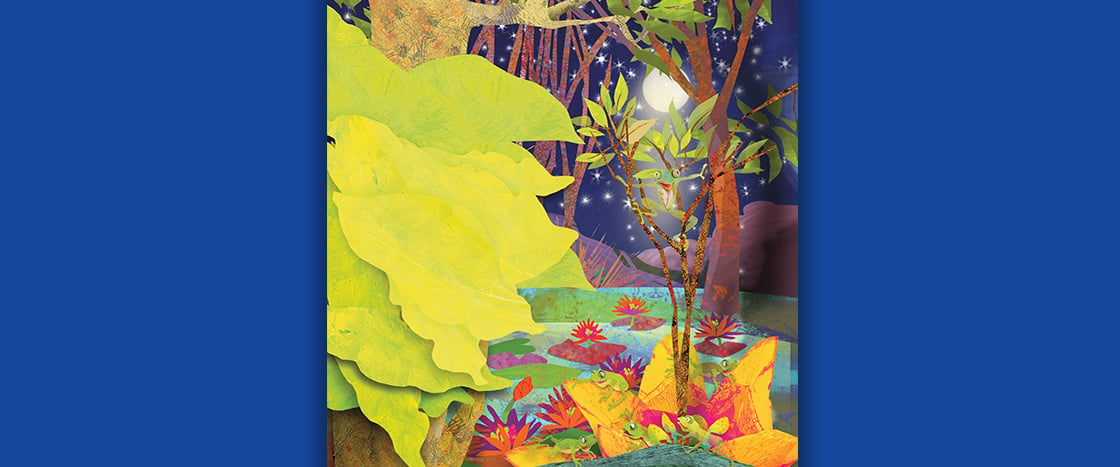you can’t see us
not like those golden frogs
flashing their beauty
because we’re not here
pretend we’re not here
you can’t eat us
we’d taste like clear air
we’re transparent
invisible
until night when stars pass through us
moonlight flows into us
we start to sing
we need to sing
we love to sing
sing
sing
sing

